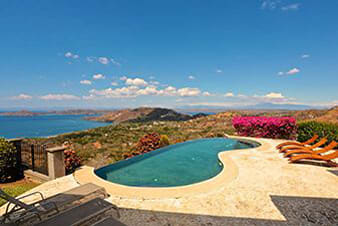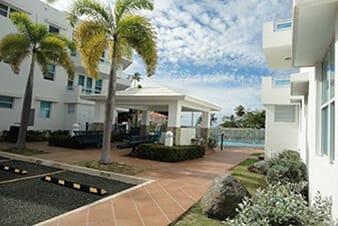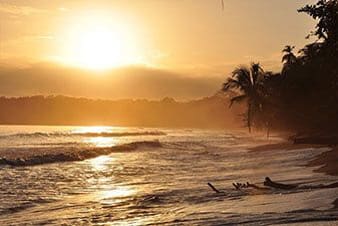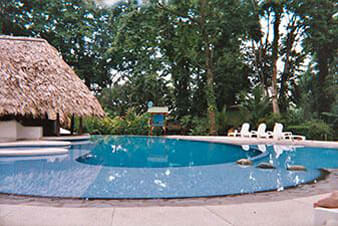THE DREAM OF LIVING IN COSTA RICA
Residency in Paradise
You hear it all the time, you are living the dream of residency or retirement in Costa Rica. The country is ranked as number one on the World Happiness Index by Happy Planet. International Living rates Costa Rica in the top ten for best places to retire. About fifty thousand retirees now live here. You can retire in peace and enjoy the goodness of nature and life here. There is no army, amazing natural beauty, environmentally friendly policies, and a temperate tropical climate. Some of the most prestigious human rights organizations have headquarters here.
One important factor of residency or retirement in a different country is the cost of living. In Costa Rica the cost of living is much lower than in North America or most European countries. This is one of the reasons why people choose Costa Rica as their new home. If your cost of living in the United States of America is three thousand five hundred dollars a month then it will be about two thousand dollars a month in Costa Rica. This gives you the income to make your lifestyle more exciting.
We provide the best service for Costa Rica residency, retirement, and living, and explain all the options to live or retire here. Moving to paradise is simple, you just need to follow our advice, and we provide the expert help for your happier and healthier life in Costa Rica. Many people from different countries retire to Costa Rica every year. and we have years of experience in legal residency and relocation. Retire here and enjoy the climate, the mountains, the beaches, the rainforests, and the happiness and warmth of the people.
You deserve the best in life because you have earned it. No wonder they say life actually starts with living as you like or retirement. So if you are looking for a place where you can retire in peace and enjoy the goodness of nature and life, then we have just the right location for you in Costa Rica. There are one hundred thirty-two miles (two hundred twelve kilometers) of Atlantic coastline and six hundred thirty-one miles (one thousand sixteen kilometers) of Pacific coastline with tropical, sunny, sandy beaches. There are also seven different micro climates from tropical forests, mountains and volcanoes, to sun soaked beaches
Residency
There are many different type of legal residency in Costa Rica but the most popular is retired income, called pensionado. The retiree residency program has been in effect in Costa Rica for more than forty years. You only need a pension of at least one thousand dollars ($1,000) per month to qualify for the retiree program. You only need one income per family so this includes your spouse and any minor children.
Another residency type is other income, called rentista. To qualify you need receive two thousand five hundred dollars ($2,500) per month in income. This can be from investments, rents, and other fixed income that is not wages from working. You can also put sixty thousand dollars ($60,000) in a bank certificate of deposit to qualify.
Also available is the investment type called Inversionista. If you invest one hundred and fifty thousand dollars ($150,000) in Costa Rica you can use this category. You can invest in a business or real estate. This includes a home, farm, beach property, or any other form of investment in Costa Rica.
Life Style
Costa Rica is one of the oldest democracies in Latin America and enjoys political and economic stability and a low crime rate. Costa Rica has not had an army since 1948 and has more school teachers than policemen. Tourism has seen an unprecedented growth in the last years with many people from the United States of America and Europe visiting the countryside and beaches. Costa Rica offers great homes and real estate at low prices in a great climate with a low cost of living. Costa Ricans' are very friendly and hospitable, and is considered the happiest country in Latin America and maybe the world. Costa Rica also continues to be an inclusive society, making everyone feel welcome despite their gender, religion, ethnicity race, or sexual preference. The main religion is Roman Catholicism, with Evangelical Christians, Jehovah's Witness, Protestant Christians, Mormons, Jews, and other.religions as part of the culture.
Low Cost of Living
Most American, Canadian, and European expats in Costa Rica spend much less money on day-to-day expenses than they do in their home countries. Cost of living, of course, depends on lifestyle. But in many ways Costa Rica is much more affordable than back home. There is almost everything that you can find in North America, Canada, or Europe, and there are also many local products like fruits and vegetables.
Many retired couples live well on two thousand dollars ($2,000) per month and with extras on two thousand five hundred dollars ($2,500). A person can live on one thousand dollars ($1,000) to one thousand five hundred dollars ($1,500) a month, or less, and others spend hundreds of dollars more, depending on their lifestyles. That includes all normal costs, including housing, transportation, medical care, utilities, food, and entertainment. Real estate, whether you rent or buy, is more affordable in Costa Rica with North American-style homes in great locations and all reasonably priced.
Costa Rica is not really cheap, but it is not expensive either. A middle class family of four with two adults and two children, living in safe neighborhood in the Central Valley, with children attending private schools, with a maid three to five days a week, can expect have expenses of around two thousand five hundred dollars ($2,500) with this comfortable lifestyle. Of course, you can spend more for cars, restaurants, and other add-ons.
Groceries are about forty percent lower than the United States of America or Canada. Housing is less than one-half of North America.
Health Care
Costa Rica has been noted as Central America's greatest health successes. Its healthcare system is ranked higher than that of the United States, According to the UNDP the life expectancy at birth is 80.1 years, ahead of the United States of America at 78.9 years and just behind Canada at 82.3 years. Costa Rica has one of the five Blue Zones in the world where people live measurably longer lives. It is in Nicoya in Guanacaste. Maybe the better quality of life and less stress are some of the reasons for this.
The creation of the Social Insurance Administration (Caja Costarricense de Seguro Social – CCSS), has provided universal health care to its residents. The CAJA took over administration of all twenty-one of the country's public hospitals and health care centers. By the year two thousand social health insurance coverage was available to eighty-two percent of the Costa Rican population. One of the specialty hospitals is dedicated to people over seventy years of age. There are also many private doctors, clinics, and hospitals. About eight percent of Costa Rica's GDP is in the health care sector, and about seventy percent is paid for by the government.
Primary health care clinics include general practitioners, nurses, a pharmacy, and an emergency clinic. There are five specialty national hospitals, three general national hospitals, seven regional hospitals, thirteen peripheral hospitals, and ten major clinics that serve as referral centers for the primary care clinics, There are many family and community medical services centers, promotion and prevention programs, and vaccination programs. Private medical and dental services are much more affordable in Costa Rica than North America and the quality of the service is equal or better.
Population and Language
The population of Costa Rica is slightly more then five million people with a population makeup of about eighty-three percent white and mestizos, seven percent black, three percent Amerindians, and the remainder mixed from many foreign countries. The official language of Costa Rica is Spanish but many people speak English, mainly in San José and in the beach areas. There are five living local indigenous languages spoken by the descendants of pre-Columbian peoples, the Maléku, Cabécar, Bribri, Guaymí, and Buglere.
Public Services and Transportation
Every home has access to electricity, water, internet, cable television, and all the other amenities. Police service and firehouses are located throughout the country. Every municipality has a service department and a health service department. Public schools are in every neighborhood and education is required by law. Medical and dental services are provided through the CAJA in the entire country.
Bus service is provided throughout the country and there is train service in the greater metropolitan area. Many people use it for commuting to work. Taxis are popular and Uber, Lift, and Didi also operate in the cities. There is ferry service across the Gulf of Nicoya and well a private boats. Tortuguero National Park and Barra del Colorado Refuge have boat service.
Costa Rica is connected to the rest of the world by the Pan-American highway, by sea, and by air. There are four international airports, Liberia, Guanacaste, LIR Daniel Oduber Quirós International Airport, Limón, Limón, LIO Limón International Airport, San José, Alajuela, SJO Juan Santamaría International Airport, and San José, San José, SYQ, Tobías Bolaños International Airport. There are eighteen domestic airports located throughout the country served by SANSA and several private airlines. Helicopter service is available. There are seven commercial ports, three on the Atlantic Ocean and four on the Pacific Ocean.
Driving
Your driver's license is good to use for the length of your visa. You need to have your passport with you to show the visa in case you are stopped. Roads vary from well paved two-lane highways to dirt roads with potholes and river crossings. The roads in the capital of San José and the central valley and the tourist areas are nice and well maintained but once you get out into the rural areas the conditions can change.
There is no requirement for an international driver’s license and generally the traffic rules are similar to other countries. Lanes are marked with double solid lines when passing is not allowed and hatched lines when passing is permitted. Speed limits, in kilometers, are posted with signs along the roads though usually not as frequently as what you are used to. Seat belts are required for everyone in the car. Children under the age of 12, depending on height and weight, are to use car seats or booster seats.
Weather and Geography
Costa Rica, lying between Nicaragua and Panama, goes completely coast to coast of the Central American isthmus. Its width ranges from 175 miles (282 kilometers) on the northern border to 74 miles (119 kilometers) on the southern borer. A low, thin line of hills that are between Lake Nicaragua and the Pacific Ocean in Nicaragua widen when they enter northern Costa Rica and form the high mountains in the Pacific northwest and the center of Costa Rica. Then as they go south they become mountains of tectonic origin with the highest peak being Mount Chirripé which is 12,530 feet (3,820 meters) high. There are lowlands on both coastlines, mainly swampy on the Caribbean coast, savanna and dry forest on the Pacific northwest, and mangrove and rainforests on the Pacific southwest. The main rivers start in the mountains flow to both the Caribbean coast and the Pacific coast.
If your idea of quiet living or retirement is spending your days at the beach, you will really like Costa Rica where you have beaches on both the Pacific and Atlantic coasts with some of the most beautiful beaches in the world and world-class surfing.
Of course, you also have volcanoes, cool and wet cloud forests, dense jungles, tropical dry forests, golden beaches, and secluded waterfalls and rivers. About one-quarter of the land area is made up of protected National Parks that are teeming with wildlife including spider monkeys, jaguars, and quetzal birds.
Cuisine
Costa Rican cuisine is a blend from many origins including Native American, Spanish, and African. The very traditional tamale and many others foods made from corn are representative of the indigenous inhabitants and similar to other Mesoamerican countries. The Spaniards brought many ingredients to the country from other lands, especially spices. Later the African flavor was added with other Caribbean mixed flavors. Today Costa Rican cuisine is very varied with every ethnic group who have become part of the country's population influencing the cuisine. Some of the most popular dishes are Gallo Pinto (rice and beans) for breakfast, casado, tamal, arroz con leche, sopa negra (black bean soup), olla de carne (stew), and patacones.
Safety and Stability
Costa Rica has the oldest democracy in Latin America where citizens vote and elect their leaders every four years. It has a stable government that has functioned peaceably, without an army, since 1948. There is a large middle class and wealth is fairly distributed with extreme poverty being rare. Because of this crime is low and the country is safe and secure. Costa Rica is one of the few countries in the world with no army so it can use its economic resources towards education and health care. The National Police Force is in charge of the country's security. Costa Rica also continues to work on being an inclusive society, making everyone feel welcome despite their gender, religion, ethnicity, or sexual preference.
Conservation and Nature
186 areas are protected by the National Conservation Areas System (SINAC). SINAC protects thirty-two national parks, fifty-one wildlife refuges, thirteen forest reserves, and eight biological reserves. Three of the national parks are UNESCO World Heritage Sites. Twenty eight percent of the land area is protected, one of the highest in the world. Costa Rica is a nature lover’s paradise and a true leader in conservation.
You can have a wonderful time in these parks and reserves. This is a great place for nature enthusiasts, wildlife photographers, campers, hikers, and bird watchers. It shelters five percent of the world's biodiversity and has rainforests, cloud forests, tropical dry forests, volcanoes, beaches, and many remote areas. All of these are available without having to travel great distances to visit them.
Costa Rica has many accepted and progressive environmental policies. It meets all five UNDP criteria that are established to ensure environmental sustainability. It was ranked third in the Americas in the 2016 Environmental Performance Index and was twice ranked the best country in the Happy Planet Index which includes environmental sustainability. Costa Rica plans to become a carbon-neutral country by 2021. Most years 98% of the electricity was generated from non-petroleum sources like hydro, solar, and geothermal.
Sports
Soccer is the national sport in Costa Rica and the national team has played in five FIFA World Cup tournaments and reached the quarter-finals in 2014. It was the runner-up in 2002 in the CONCACAF Gold Cup. Paulo Wanchope, a forward who played for three clubs in England's Premier League, and Keylor Navas, who plays as a goalkeeper for the French club Paris Saint-Germain and the Costa Rica national team, have brought foreign recognition for Costa Rican soccer.
Basketball is also a popular sport in Costa Rica and pickup basketball is played in every neighborhood. Costa Rica played for the first time in the Summer Olympics of 1936 with the fencer Bernardo de la Guardia and the Winter Olympics for the first time in 1980 with the skier Arturo Kinch. All four of Costa Rica's Olympic medals were won by the sisters Silvia and Claudia Poll in swimming, with Claudia winning the only gold medal in 1996.
Education
When the army was abolished this part of the national budget was given to the public school system and universal public education is guaranteed in the constitution. Primary education is obligatory and along with preschool and high school they are all free. Students who graduate from high school and pass the graduation test receive a Bachelor Diploma issued by the Costa Rican Ministry of Education. The literacy rate in Costa Rica is about ninety-seven percent and English is widely spoken in many areas because of the tourism industry. Italian, Portuguese, Mandarin, and French are also taught.
There are five state universities and more than sixty private universities. The private institutions are usually smaller and often specialize in a particular subject area. In recent years there is more interest in Science, Technology, Engineering and Math (STEM) programs as well as the liberal arts.
Investment Opportunities
Due to the low Costa Rica cost of living, more and more foreigners are purchasing real estate here. There is a wide variety of homes here, from the mountains to the beaches, as well as large estates or gated communities. It is home to several multinational companies that have chosen to establish here due to the economic and political stability, including Amazon and Intel among others. There is a highly educated labor force and technology, communications, and internet are competitive. Government organizations such as the Costa Rica Investment and Development Board (CINDE), the Costa Rican Exports Chamber (CADEXO) and the Foreign Trade Promotion Institute (PROCOMER) provide information to those interested in investing in Costa Rica.
Relocation
Costa Rica is a wonderful country that will welcome you with open arms. When you are ready to move to Costa Rica, either by yourself or with your whole family, you will help with your relocation and ensure that the process is easy and stress free. We have years of experience in all areas of residency, retirement, and relocation, and provide you with the best advice and help you with residency application, visas, real estate purchase or rental, business establishment, and all of your other needs.



